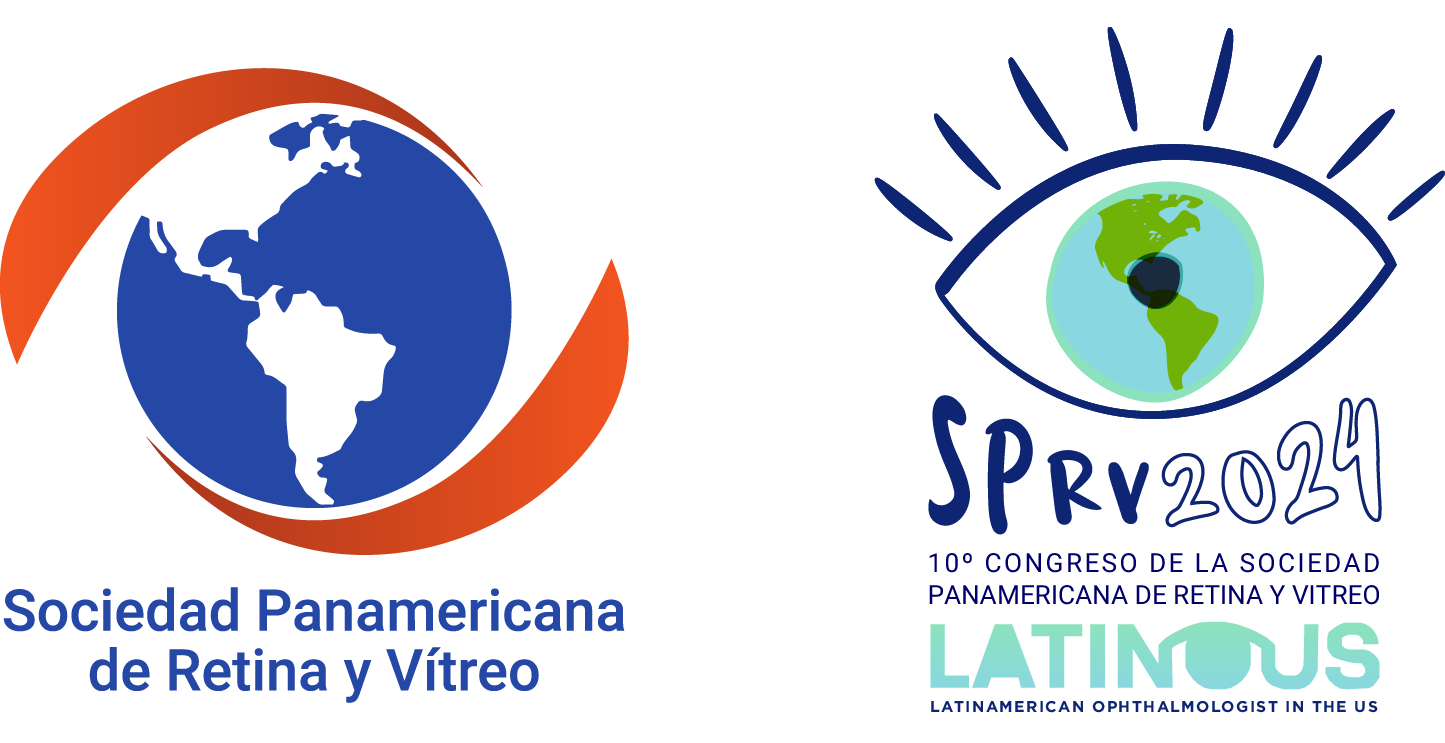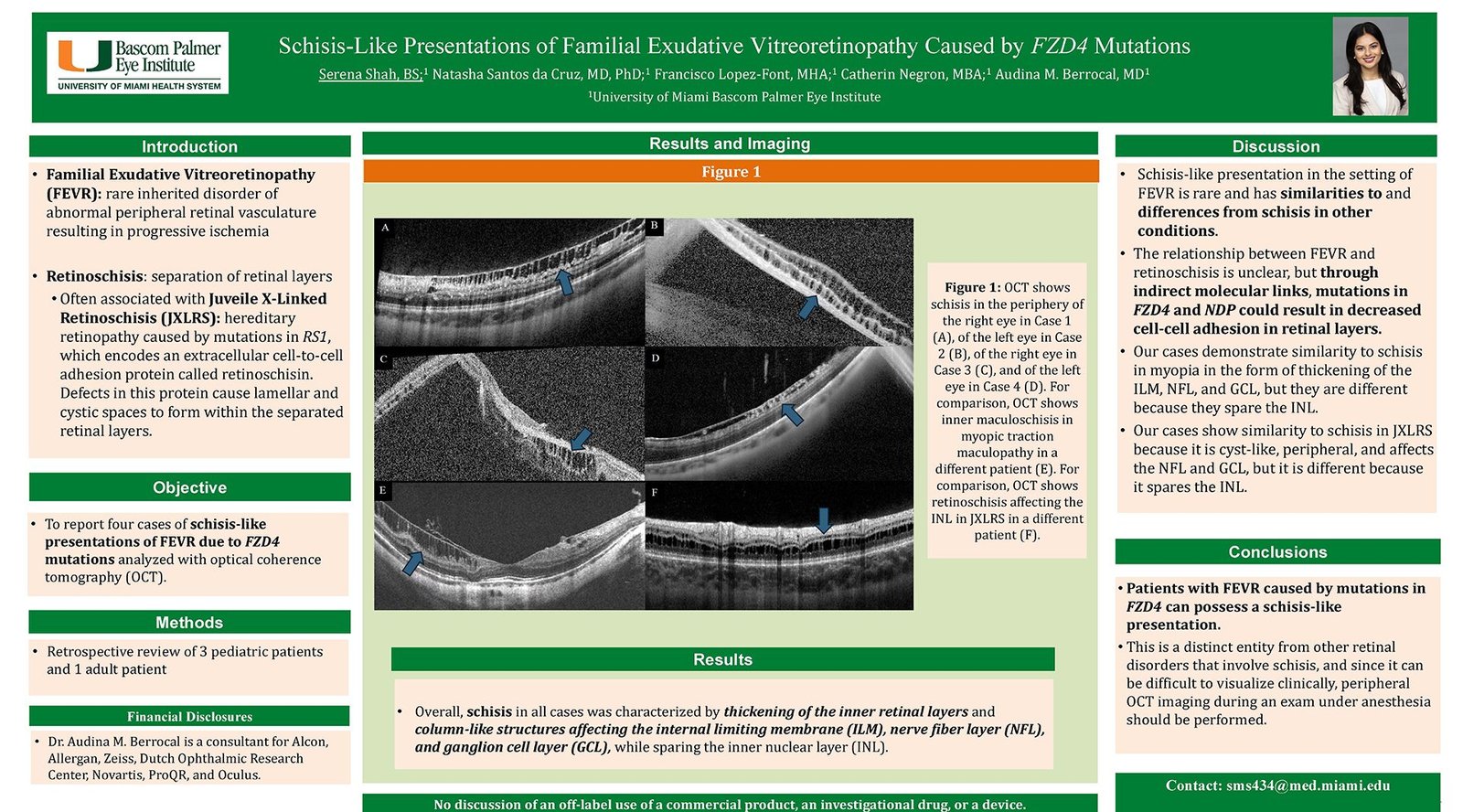CASE REPORT

Schisis-Like Presentations of Familial Exudative Vitreoretinopathy Caused by FZD4 Mutations
PRESENTING AUTHOR
Serena Shah
-
Natasha Ferreira Santos da Cruz,Bascom Palmer Eye Institute
-
Francisco Lopez-Font,Bascom Palmer Eye Institute
-
Catherin Negron,Bascom Palmer Eye Institute
-
Audina M. Berrocal,Bascom Palmer Eye Institute
-
Purpose:
Our study reports four cases of schisis-like presentations of familial exudative vitreoretinopathy (FEVR) due to FZD4 mutations analyzed with optical coherence tomography (OCT).
-
Case Report:
Three pediatric patients and one adult patient presented with unilateral, inner schisis in the retinal periphery. Overall, schisis was characterized by thickening of the inner retinal layers and column-like structures affecting the internal limiting membrane (ILM), nerve fiber layer (NFL), and ganglion cell layer (GCL), while sparing the inner nuclear layer (INL).
-
Discussion:
Schisis-like presentation in the setting of FEVR is rare and has similarities to and differences from schisis in other retinal conditions, observed utilizing OCT. The exact relationship between FEVR and retinoschisis is unclear, but through indirect molecular links, mutations in FZD4 and NDP could result in decreased cell-cell adhesion in retinal layers. Our cases demonstrate similarity to schisis in myopia in the form of thickening of the ILM, NFL, and GCL, but they are different because they spare the INL. Our cases show similarity to schisis in Juvenile X-linked retinoschisis (JXLRS) because it is cyst-like, peripheral, and affects the NFL and GCL, but it is different because it spares the INL.
-
Conclusions:
Patients with FEVR caused by mutations in FZD4 can possess a schisis-like presentation. This is a distinct entity from other retinal disorders that involve schisis, and since it can be difficult to visualize clinically, peripheral OCT imaging during an exam under anesthesia should be performed to fully evaluate these patients.
The authors have no financial interests in any material discussed in this article. There are no conflicts of interest to disclose.












